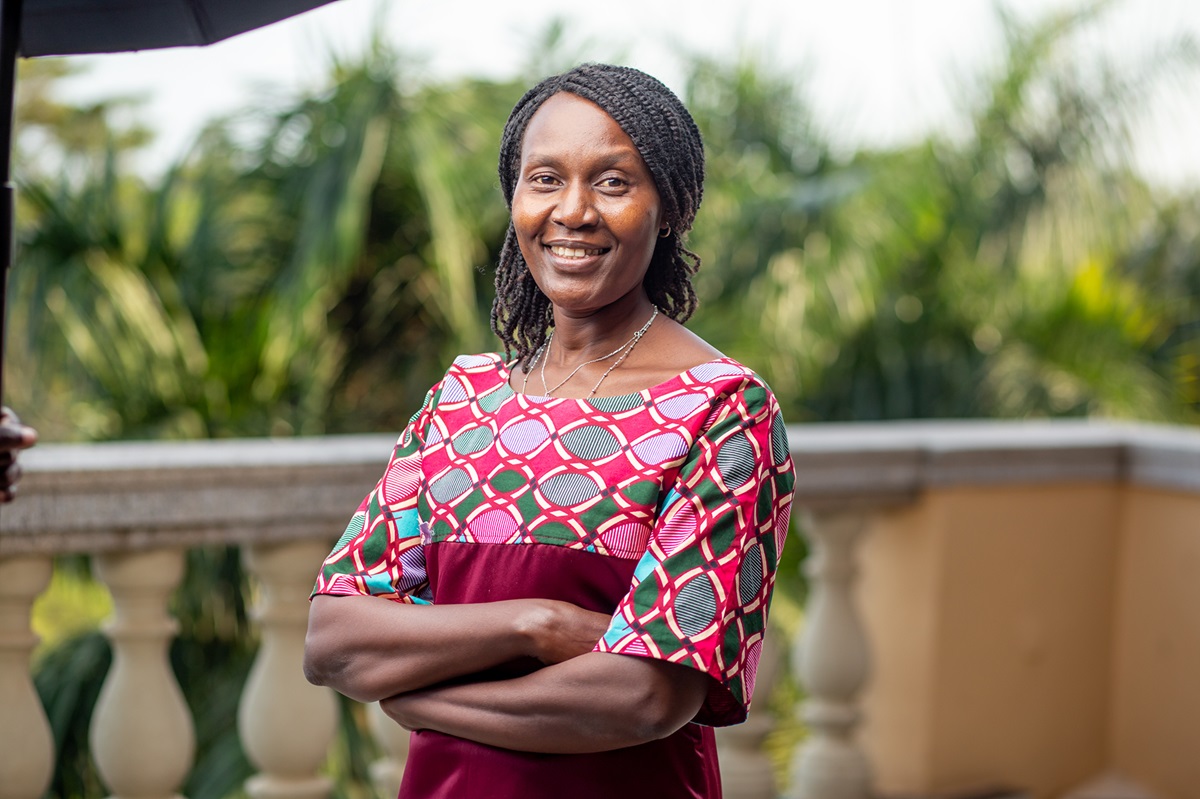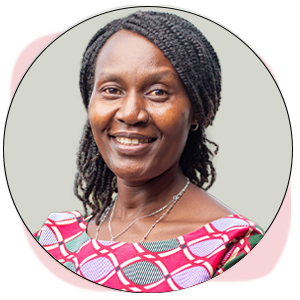Every year, between 25 November to 10 December, the world marks 16 Days of Activism Against Gender-Based Violence, turning our attention to the millions of girls and women around the world who experience violence on a regular basis – and the millions more who live at risk of experiencing it.
Like in many parts of Africa, gender-based violence in Uganda is emerging as a silent pandemic that is putting the lives of girls and women in danger and preventing them from realizing their full potential. Often disguised as cultural norms and tolerated, this violence perpetuates cycles of abuse that grow more resistant to change the longer they are allowed to persist.
To mark this year’s 16 Days of Activism against gender-based violence, we speak with Dr. Doreen Ondo, a Program Officer in the Ministry of Health (Uganda) and an East Africa Leadership Journey cohort member, on gender-based violence in Uganda and how institutions and governments can invest to prevent this scourge against women and girls.

1. How would you describe your lived experience as a woman working in the health sector?
My experience as a woman in health has been both exciting and challenging. The sight of a mother holding a newly born baby, an HIV positive mother receiving the HIV negative results of her baby, the successful implementation of a health policy that impacts on the lives of communities – all these things give me reason to wake up every day and the strength to go through the challenging times.
On the other hand, the difficulty of achieving work-life harmony is an ongoing challenge. As a woman, the dynamics of balancing work, especially the night duties, emergencies, and travel, with family, can be difficult. I love to travel and through my work I have been able to do a lot of this, exposing me to many cultures and peoples as well as beautiful places. However, travel takes me away from family and that is a big sacrifice to make.
2. For more than two decades you have worked in various roles within the health sector, including as a sexual and reproductive health (SRH) expert in both technical and leadership capacities. What are some of the biggest gaps you have noticed in the design and delivery of SRH and GBV services to women?
One of the biggest gaps I have noticed is the inadequate numbers and renumeration of female health workers.
The high workload aggravated by the integration of new programs and interventions, as well as task shifting, leads to burnout especially among the midwives. With the integration of HIV/AIDS into SRH services, many health workers have taken on new roles like counselling, laboratory work (HIV testing), data management, psychosocial work, community work etc., becoming jacks of all trades at the risk of being masters of none.
This has impacted the quality of SRH service delivery to women, including those who have experienced rape, defilement, sexual assault, reproductive coercion, intimate partner violence and/or female genital mutilation (FGM), which are all forms of gender-based violence.
3. Specific to the delivery of these services, what shortcomings have you noticed in how health systems care for victims of gender violence?
The key shortcomings in the care for the victims of gender violence include capacity gaps among the health providers and lack of clear referral pathways, leading to delays in accessing care, lack of logistics and supplies (GBV kit).
Moreover, the absence of clear referral pathways exacerbates the situation. Survivors of gender-based violence are frequently left navigating a convoluted and poorly coordinated healthcare system. This confusion can lead to substantial delays in accessing the necessary medical and psychological support, thus prolonging their trauma and hindering recovery.
We require a multi-faceted approach to address these shortcomings. Training programs need to be expanded to equip healthcare workers with the skills to offer empathetic and effective care. In addition, there’s need to develop a clear, efficient referral pathway to ensure survivors can swiftly access the services they need.
4. According to the Uganda Bureau of Statistics(2021), 56% of married women aged 15-49 reported having suffered physical and/or sexual violence by a husband, and more than one in three women (36%) had experienced sexual violence, more often from a partner. What are some of the drivers of the high rates of violence against women?
Culture plays a big role and is a major driver of violence against girls and women. In patriarchal societies such as ours, Intimate partner violence has been normalized to the extent that men are often encouraged to assert their dominance through abuse. In fact, so widespread are the cultural stereotypes of how men should engage with or relate to girls and women, that in many communities it is believed that there is no such thing as sexual assault within the confines of courtship or marriage because men are simply “taking what’s theirs”.
In many communities, patriarchal structures that value the contributions and lives of boys and men over those of girls and women continue to deny the latter opportunities for education, meaningful employment and the financial independence that often comes with these two. This in turn perpetuates cycles of poverty that keep girls and women dependent on men, therefore making them more susceptible to abuse.
We also see higher rates of violence where poverty is rife, and girls and women are forced to depend on intimate partners to get by. Poverty and unemployment have been linked to substance abuse among young men, with studies finding that men who abuse alcohol and other drugs are more likely to be violent towards women.
All these factors conspire to put women and girls at greater risk of violence and need to be urgently addressed through multistakeholder collaboration that involves the communities most affected.
5. What measures can be put in place to protect girls and women, especially in a country where violence against women has been normalized under the guise of culture?
One of the biggest steps we can take is to invest in the education and mentorship of girls. Supporting girls to stay in school empowers them to gain economic independence, which is a significant tool in the fight against gender-based violence.
Further, mentoring young boys and men and molding them into respectful, responsible members of the community who embrace positive masculinity is critical to ending gender-based violence. By teaching this at a young age, we can address the root causes of violence against girls and women and therefore create safer spaces for them to thrive.
6. What role can health workers, from community level right up to the national level, play in preventing, reporting, and eliminating violence against women, and what opportunities can be leveraged to empower and engage grassroots health workers in these efforts?
Health workers must be viewed as central to efforts to create awareness about violence in all its forms. By empowering health workers – including midwives and peer mothers who are often trusted members of the community – through continuous professional development, mentorship and training, we can sensitize communities on the dangers of gender-based violence, address its root causes and provide better support for its survivors.
In addition, governments can work with other stakeholders to integrate information and interventions of elimination of violence in SRH activities and programs and empower health workers from grassroots to tertiary level to manage cases of gender-based violence.
7. Can more equitable and diverse health leadership help change the troubling statics on gender-based violence in Uganda and beyond? If so, how?
Yes, it can. Diversity in health leadership in terms of professional experience, age, gender, and the inclusion of persons that have experienced or witnessed gender-based violence can help address this silent pandemic by crafting a more nuanced approach to advocacy, resource mobilization and the creation of a conducive policy environment for the development and implementation of interventions to eliminate gender-based violence.
8. We all have a responsibility to help create a future where all women and girls feel safe, equal and respected. What is your call to action to health and political leaders to push the needle on much-needed change?
Imagine a world where all women and girls feel safe, equal and respected. As a health and political leader SPEAK OUT about gender-based violence, help mobilize resources needed to train health workers to prevent, identify and manage cases of violence against women and girls, and amplify the voices of women and girls in decision making.



